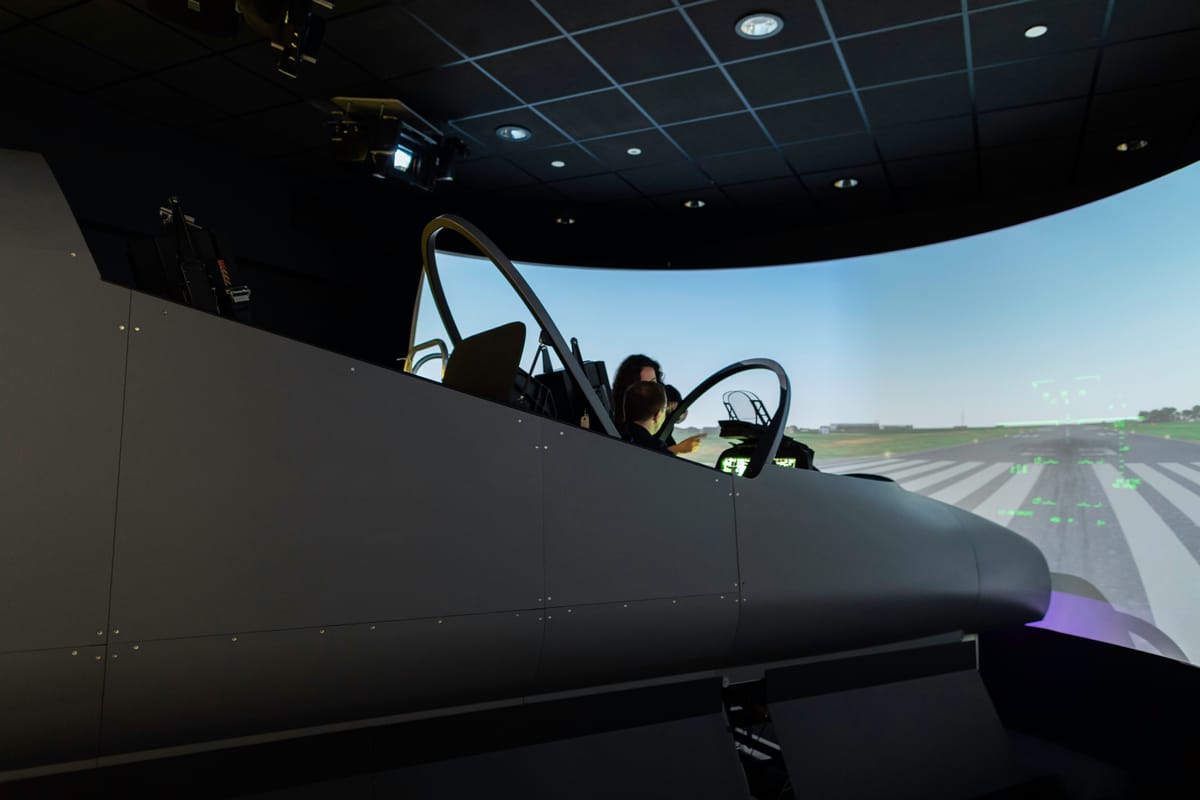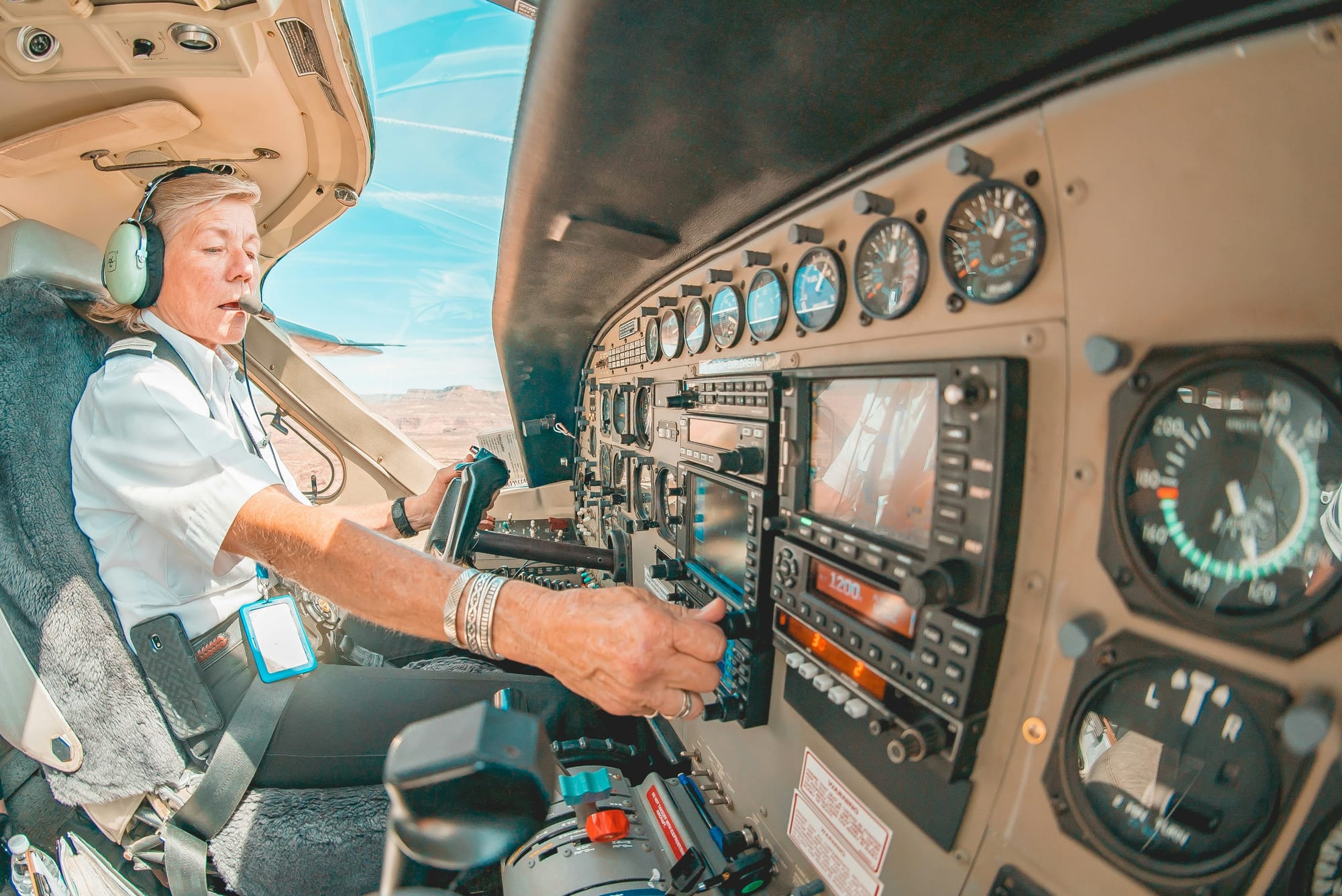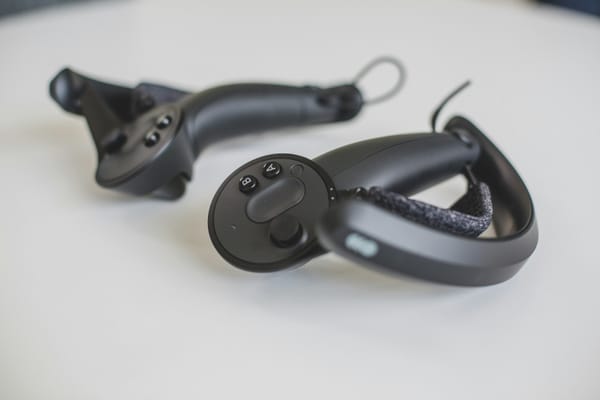5 Best VR Flight Simulator Tools in 2024
Take your simulation experience to new heights with these top VR flight simulator tools. Get ready to soar through the skies like never before.

The realistic graphics and immersive VR technology allow you to experience the thrill of flying a plane from the comfort of your home. With the latest Quest Pro controllers, you can control every move of the aircraft and feel like a real pilot navigating through the clouds. Whether you're a seasoned flight enthusiast or a newcomer looking for an exciting challenge, VR flight simulators offer an unforgettable experience that will leave you craving more. Jump into the cockpit and soar to new heights with this innovative and thrilling virtual reality adventure.
Table of Contents
- How Can VR Flight Simulators Enhance Collaboration Among Remote Teams?
- What Are the Key Features to Look for in VR Flight Simulators for Remote Work?
- How Do VR Flight Simulators Benefit Remote Teams and Gamers Alike?
- 5 Best VR Flight Simulator Tools in 2024
- What Are the Advantages of Using VR Flight Simulators for Team Building and Training?
- How Do VR Flight Simulators Improve Engagement and Productivity in Virtual Workspaces?
- What Does the Future Hold for VR Flight Simulators in Remote Work and Gaming Environments?
- Get The Apple Vision Pro Experience for A Fraction of The Cost With Fluid
How Can VR Flight Simulators Enhance Collaboration Among Remote Teams?

Immersive Experiences for Higher Engagement
VR flight simulators offer an immersive experience that captivates team members, leading to higher engagement levels and more productive collaborative sessions.
Realistic Scenarios for Problem-Solving
Simulating real-world scenarios in virtual environments allows remote teams to practice problem-solving and decision-making together, enhancing their collaborative skills.
Enhanced Communication in Virtual Spaces
Virtual spaces in VR flight simulators facilitate seamless communication among team members, promoting teamwork, idea exchange, and overall collaboration.
Related Reading
What Are the Key Features to Look for in VR Flight Simulators for Remote Work?

Multiplayer Capabilities
Look for VR flight simulators that support multiplayer functionality to enable real-time collaboration among remote team members.
Customization Options
Features like customizable environments, aircraft models, and scenarios enhance the user experience and adaptability for remote work settings.
Integration with Collaboration Tools
Compatibility with collaboration tools like Slack, Microsoft Teams, or Zoom can streamline communication and task management.
Statistics
According to Statista, the global virtual reality market is projected to reach $108.4 billion by 2024.
How Do VR Flight Simulators Benefit Remote Teams and Gamers Alike?

Skill Development
VR flight simulators, let me share how this technology benefits remote teams and gamers alike. VR flight simulators provide a safe and realistic environment for skill development. Remote teams can use these simulators to train their employees effectively.
By immersing themselves in a virtual flight environment, team members can enhance their aviation skills without any real-world risks. Similarly, gamers can use VR flight simulators to hone their flying capabilities, offering a high-fidelity and engaging experience that traditional flight simulators might lack.
Remote Collaboration
VR flight simulators promote remote collaboration. They allow team members from different locations to come together virtually, engage collaboratively, and develop a sense of teamwork. For remote teams, this fosters effective communication, problem-solving, and coordination, all of which are essential for professional success.
By providing a shared experience through virtual flight simulations, these tools can enhance team cohesion and strengthen relationships among team members.
Entertainment and Recreation
VR flight simulators offer entertainment and recreation. Gamers can enjoy immersive experiences by stepping into the cockpit of a virtual aircraft and exploring the skies from the comfort of their homes. On the other hand, remote teams can use these simulators to unwind and bond through virtual flights. By engaging in recreational flying sessions, team members can relax, take a break from work, and enjoy a shared experience that enhances camaraderie.
According to a report by PwC, 67% of surveyed executives believe that VR and AR will become mainstream in their industry within the next five years. This statistic underscores the growing importance of VR flight simulators in various sectors and highlights the potential benefits they offer to remote teams and gamers.
5 Best VR Flight Simulator Tools in 2024

1. Fluid: Turn your VR headset into a spatial computer
Fluid allows you to create a flexible workspace in XR on the Meta Quest. With Fluid, you can place big screens anywhere in augmented reality. Fluid enables flexible workspaces and entertainment, cloud gaming, and much more. The most game-changing feature of all: Fluid allows you to create a virtual workstation with VR/AR using the Meta Quest, with virtually any screen size.
Revolutionizing Remote Work
You can create your own $5,000+ work setup in VR/AR, and take it wherever you’d like to. Fluid solves remote working and remote work collaboration, long-distance relationships, remote teams, small startups with distributed cofounders, gamers who want a portable VR/AR gaming set, students, and much more.
Unlocking Productivity
Turn your VR headset into a spatial computer for free today with Fluid. Break free from physical screens, watch content on a big screen from anywhere, get into a deep flow state by being immersed in your work, and create a flexible workspace anywhere with Fluid.
2. Microsoft Flight Simulator: A Highly Realistic Experience
Known for its realistic graphics and extensive virtual landscapes, Microsoft Flight Simulator offers a comprehensive experience for both remote work and gaming.
3. Varjo Aero: Top Choice for Immersive Remote Work Environments
Varjo Aero provides high-fidelity visuals and advanced ergonomics, making it a top choice for immersive remote work environments.
4. FlyInside Flight Simulator: User-friendly Interface and Diverse Aircraft Selection
With a focus on virtual reality integration, FlyInside Flight Simulator offers a user-friendly interface and diverse aircraft selection for remote teams and gamers.
5. Statistics: Increasing VR Headset Usage
Steam's Hardware & Software Survey shows an increase in VR headset usage, indicating a growing interest in VR technology.
What Are the Advantages of Using VR Flight Simulators for Team Building and Training?

Team Bonding
Team bonding is essential in any organization to create a sense of camaraderie and unity among team members. VR flight simulators are a fantastic tool that can help teams bond over shared experiences. By immersing team members in simulated scenarios and challenges, VR flight simulators can create a unique shared experience that team members can discuss, laugh about, and reminisce over.
This shared experience fosters a sense of camaraderie among team members that can translate into better teamwork, collaboration, and communication in a professional setting. The shared experience of overcoming challenges in a virtual world can create lasting bonds among team members that help build a solid foundation for effective teamwork.
Skill Enhancement
VR flight simulators are excellent tools for enhancing team members' problem-solving, decision-making, and communication skills. By immersing team members in realistic and challenging scenarios, VR flight simulators can push team members out of their comfort zones and help them develop essential skills.
Whether it's solving complex problems, making challenging decisions under pressure, or communicating effectively with teammates, VR flight simulators can provide a safe and controlled environment for team members to practice and refine these skills. The real-time feedback and guidance provided by the simulator can help team members identify areas for improvement and work on developing their skills in a supportive environment.
Cost-Effective Training
VR flight simulators offer a cost-effective training solution for organizations by eliminating the need for physical equipment and travel expenses. Traditional flight simulators are costly to set up and maintain, requiring specialized equipment and infrastructure. VR flight simulators can provide a similar training experience at a fraction of the cost.
By leveraging VR technology, organizations can provide immersive training experiences to team members without needing to invest in expensive equipment or infrastructure. VR flight simulators eliminate the need for travel expenses, as team members can access the training remotely from anywhere in the world. This makes VR flight simulators a cost-effective training option for organizations looking to provide high-quality training to their team members without breaking the bank.
Statistics
VR flight simulators have the potential to significantly enhance employee productivity by up to 35%, according to a report by Accenture. By immersing team members in realistic and challenging scenarios, VR flight simulators can help team members develop critical problem-solving, decision-making, and communication skills that are essential for success in the workplace.
The immersive nature of VR flight simulators can engage team members and motivate them to improve their skills in a supportive and controlled environment. This can translate into increased employee productivity, as team members apply the skills they have developed in the virtual world to real-world challenges and opportunities, resulting in improved performance and outcomes for the organization.
How Do VR Flight Simulators Improve Engagement and Productivity in Virtual Workspaces?

When it comes to learning a new skill or mastering a complex task, engagement is key. Interactive learning experiences provided by VR flight simulators keep team members engaged and motivated. By immersing trainees in a realistic virtual environment, they can actively participate in learning new skills.
This hands-on experience allows them to apply their knowledge immediately, reinforcing learning outcomes. The interactive nature of VR simulations not only makes the training process more engaging but also helps team members retain information better.
Real-Time Collaboration: Enhance Teamwork with Virtual Workspaces
Collaboration is essential in many work environments. VR flight simulators allow real-time collaboration, enabling teams to work together on projects and tasks seamlessly. By providing virtual workspaces where team members can interact with each other, share information, and actively engage in problem-solving, VR training promotes teamwork and collective learning.
By fostering real-time collaboration capabilities, VR flight simulators create a supportive environment for team members to work together, enhance their skills, and achieve common goals.
Performance Monitoring: VR Flight Simulators for Data-Driven Improvement
Understanding team performance and progress is crucial for optimizing productivity. VR simulations can track and analyze user performance, providing valuable insights for performance improvement and productivity optimization.
By monitoring trainees’ progress, identifying areas for improvement, and providing personalized feedback, VR flight simulators enable data-driven decision-making. These insights can inform future training strategies and enhance performance outcomes by focusing on individual needs and skill development.
Statistics: Stanford Study Validates VR Training Benefits
A study by Stanford University underscores the benefits of VR training, showing that it can significantly improve learning outcomes and retention rates compared to traditional training methods.
The study, which compared traditional classroom training to VR simulations, found that students in the VR group performed better in tests assessing retention and learning after two weeks. This research highlights the effectiveness of VR flight simulators in enhancing training outcomes, providing a strong argument for adopting this technology in training programs.
Related Reading
What Does the Future Hold for VR Flight Simulators in Remote Work and Gaming Environments?

Technological Advancements in VR Flight Simulators
Technological advancements in VR flight simulators are expected to revolutionize the user experience. Future VR flight simulators will witness significant progress in graphics, AI integration, and user interfaces. High-quality graphics will enhance the realism of the simulation, providing users with a more immersive flying experience.
With AI integration, flight simulators will be able to adapt to the user's behavior, making the simulation more challenging and engaging. Improved user interfaces will make the simulation more user-friendly, allowing both beginners and advanced users to enjoy the experience.
Industry Adoption of VR Flight Simulators
As VR technology becomes more accessible and affordable, various industries are expected to adopt VR flight simulators for a wide range of applications. Remote work, training, and entertainment are some of the primary purposes for which VR flight simulators are expected to be used.
Remote work will become more interactive as teams use VR flight simulators to collaborate and communicate effectively. Training sessions can be conducted in a safe and controlled environment, reducing risks and costs associated with real flight training. VR flight simulators will be used for entertainment purposes, providing users with a fun and engaging flying experience.
Collaborative Innovations in VR Flight Simulators
Collaborative features and tools within VR flight simulators will continue to evolve, facilitating seamless teamwork and communication among remote teams. Team members will be able to interact with each other in the virtual environment, making the work experience more interactive and enjoyable.
Tools such as screen sharing and voice chat will enable team members to communicate effectively, enhancing productivity and efficiency. With these collaborative innovations, VR flight simulators will become an essential tool for remote teams to work together effectively.
Statistics on the VR Industry
The IDC predicts that worldwide spending on AR/VR will reach $215 billion by 2023, indicating significant growth opportunities in the VR industry. As VR technology becomes more integrated into various industries, the demand for VR flight simulators is expected to increase.
With advancements in graphics, AI integration, and user interfaces, VR flight simulators will become more popular among users, driving the growth of the VR industry. Organizations that adopt VR technology for remote work, training, and entertainment purposes will experience significant benefits, leading to the continued growth of the VR industry.
Get The Apple Vision Pro Experience for A Fraction of The Cost With Fluid
Fluid is the ultimate tool for creating flexible workspaces and entertainment experiences in XR on the Meta Quest. With Fluid, you can place large screens anywhere in augmented reality, enabling a wide range of applications from cloud gaming to virtual workstations in AR/VR. The game-changing feature of Fluid is the ability to create a virtual workstation with VR/AR using the Meta Quest, with virtually any screen size imaginable.
This means you can create a high-end work setup worth thousands of dollars in VR/AR and take it with you wherever you go. Fluid provides solutions for remote working and collaboration, long-distance relationships, distributed teams, startups with remote founders, gamers looking for portable VR/AR setups, students, and much more. By turning your VR headset into a spatial computer with Fluid, you can break free from physical screens, enjoy content on a large virtual screen from any location, achieve deep focus by immersing yourself in your work, and create a flexible workspace wherever you are.
Get started with Fluid for free today and experience the future of VR/AR computing.



